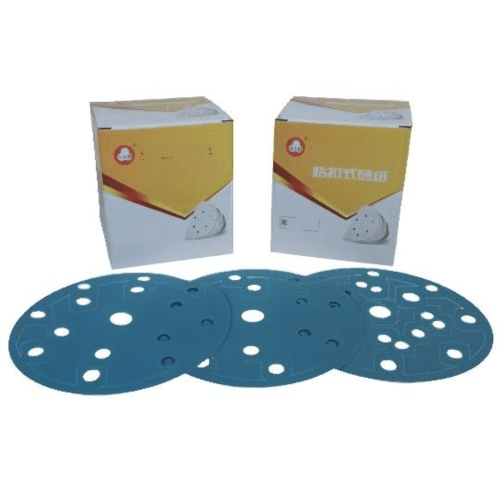Understanding the Power and Potential of Air-Powered Equipment
The world of pneumatic tools offers DIY enthusiasts an incredible range of possibilities for tackling home improvement projects efficiently and professionally. These air-powered devices harness compressed air to deliver consistent power and precision, making them invaluable additions to any serious DIYer's workshop. Whether you're working on furniture restoration, home repairs, or creative woodworking projects, selecting the right pneumatic tools can significantly impact your results and overall experience.
Modern pneumatic tools have evolved to become more user-friendly and versatile than ever before. They provide numerous advantages over their electric counterparts, including better power-to-weight ratios, reduced maintenance requirements, and enhanced durability. Understanding how to select the most appropriate pneumatic tools for your specific needs will not only improve your work quality but also ensure a wise investment in your DIY journey.
Essential Components of a Pneumatic System
The Heart of the System: Air Compressors
At the core of any pneumatic setup lies the air compressor, which serves as the powerhouse for all your pneumatic tools. When selecting an air compressor, consider factors such as tank size, CFM (Cubic Feet per Minute) rating, and PSI (Pounds per Square Inch) capabilities. A larger tank size allows for extended use without frequent cycling, while appropriate CFM ratings ensure your tools receive adequate air supply for optimal performance.
For most DIY applications, a portable air compressor with a 6-gallon tank and 2-3 CFM rating at 90 PSI will sufficiently power common pneumatic tools like nail guns and staplers. However, if you plan to use air-hungry tools such as sanders or impact wrenches, consider investing in a larger compressor with higher CFM ratings.
Connecting the System: Air Hoses and Fittings
Quality air hoses and proper fittings are crucial for maintaining consistent air pressure and ensuring safe operation of your pneumatic tools. Rubber or hybrid hoses offer excellent flexibility and durability, while PVC hoses provide a more budget-friendly option. Consider the working environment and temperature conditions when selecting hose material, as some perform better in specific situations than others.
Quick-connect fittings make tool changes efficient and straightforward, but ensure all components use compatible connection types. Standardizing your fitting system helps avoid frustration and potential safety issues down the line.

Popular Pneumatic Tools for DIY Projects
Finishing and Trim Work
Brad nailers and finish nailers are among the most frequently used pneumatic tools in DIY woodworking projects. These tools excel at precise fastening tasks, allowing for clean, professional-looking results in trim work, cabinetry, and furniture assembly. Brad nailers typically use 18-gauge nails for delicate work, while finish nailers accommodate 15 or 16-gauge nails for more substantial applications.
Pneumatic staplers also prove invaluable for upholstery projects, installing house wrap, or securing backing material to picture frames. Their consistent driving force ensures proper fastener seating without damaging surrounding materials.
Heavy-Duty Construction Tasks
For more demanding projects, framing nailers and roofing nailers deliver the power needed to drive larger fasteners into dense materials. These pneumatic tools significantly reduce physical strain compared to manual hammering while increasing work speed and accuracy. When selecting these tools, consider factors such as nail capacity, depth adjustment features, and tool weight for extended use comfort.
Impact wrenches and air hammers expand your capabilities into automotive work and demolition tasks. These powerful pneumatic tools require higher air pressure and flow rates, so ensure your compressor can handle their demands before investing.
Maintenance and Safety Considerations
Proper Tool Care and Storage
Regular maintenance of pneumatic tools ensures reliable operation and extends their service life. This includes daily oil lubrication of moving parts, cleaning air filters, and checking for loose fittings or damaged components. Store tools in a dry environment to prevent internal rust formation, and use air tool oil specifically designed for pneumatic equipment.
Develop a routine maintenance schedule that includes inspecting hoses for wear, cleaning tool exhaust ports, and testing safety mechanisms. Keep detailed records of maintenance activities to track tool performance and anticipate potential issues before they cause problems.
Safety Protocols and Best Practices
Working with pneumatic tools requires strict adherence to safety guidelines. Always wear appropriate personal protective equipment, including safety glasses, hearing protection, and work gloves. Maintain proper working pressures as specified by tool manufacturers, and never exceed recommended PSI ratings.
Before starting any project, verify all connections are secure and tools are properly maintained. Keep work areas clean and organized, ensuring air hoses don't create tripping hazards. Disconnect tools from air supply when making adjustments or changing attachments.
Frequently Asked Questions
What size air compressor do I need for basic DIY projects?
For basic DIY projects involving nail guns and small pneumatic tools, a 6-gallon portable compressor with 2-3 CFM at 90 PSI is typically sufficient. However, if you plan to use multiple tools simultaneously or operate air-hungry tools like sanders, consider a larger compressor with at least 4-5 CFM capacity.
How often should I maintain my pneumatic tools?
Daily maintenance should include adding a few drops of air tool oil before use and cleaning external surfaces. Weekly maintenance involves checking air filters and connections. Monthly maintenance should include thorough cleaning, detailed inspection of all components, and testing of safety mechanisms.
Can I use the same pneumatic tools for both indoor and outdoor projects?
While most pneumatic tools can be used both indoors and outdoors, you'll need to take extra precautions in outdoor environments. Protect tools from moisture, use weather-resistant air hoses, and ensure proper drainage of air compressor tanks when working outside. Some tools may require different pressure settings based on temperature and humidity conditions.


